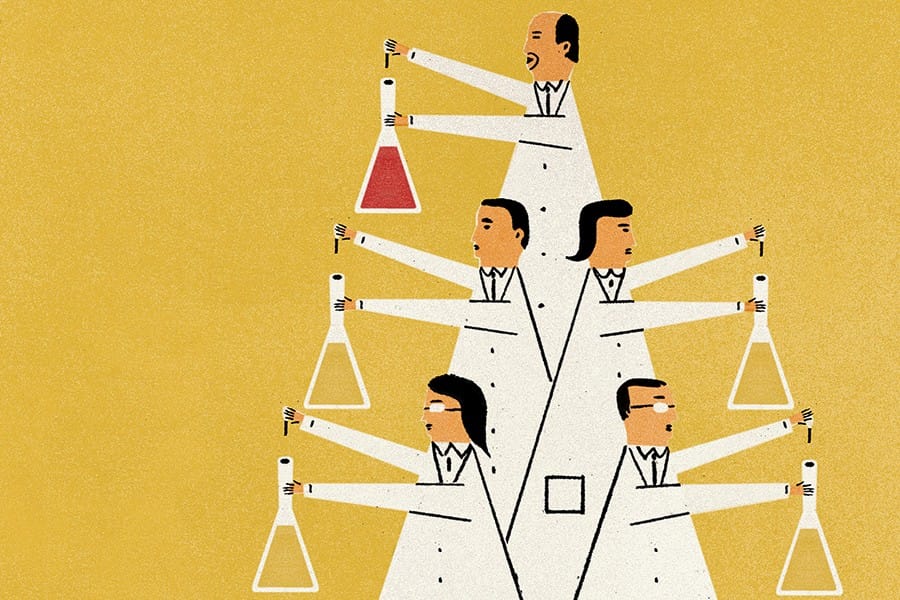
The Life Sciences recruitment sector has undergone tremendous growth over the past two decades. Since 2006, Ontario’s life sciences sector alone has seen a 19.3% increase (PDF) in jobs, thanks in great part to increased access to capital, an environment of overlapping collaborative fields, competition between companies, and critically, the attraction of new talent.
However, despite the exponential increase of interest and employment in the life sciences sector, talent is in short supply. Less skilled labour means less innovation, and innovation is something that benefits us all. It’s easy to lose ground in a field where advances are made so quickly, and it would seem that we’re not doing enough to close the skills gap.
Life Sciences Career Trend #1: New Technology, New Skills
Although we have made great strides in technology, it takes employees skilled in mathematics and programming to keep up with innovations. Artificial intelligence (AI) in production methods, for example, is an area with great potential for fast-forward advancement, but without an adequate supply of innovators, technicians, clinicians, and thought leadership, the future is uncertain.
Considering the constant state of evolution in the field, new skill sets are needed to meet the demand. Jobs that did not exist five or ten years ago are suddenly in abundance and looking to be filled and improved upon.
Get a free assessment of your recruitment needs
Contact usIn addition to purely medical, clinical, and research positions, some of the areas experiencing massive growth include:
- Robotics
- Smart Technology
- The Internet of Things (IoT)
- Artificial Intelligence
- Data Science
- Regulatory Affairs
- Project Management
- Sustainability
- Finance
- C-Suite Leadership
- Marketing
With rapidly expanding niches like immuno-oncology, neurobiology, and genomic data sequencing, life sciences need creative minds that can think on their feet and evolve their thinking to support new trends.
Artificial intelligence is another area that is advancing at lightning speed, allowing for faster and more economically feasible manufacturing and production as well as improved clinical outcomes. However, AI requires an advanced level of skill and insight to program and maintain. More engineers, data analysts, and process developers are needed to continue this upward trend.
Life Sciences Career Trend #2: Startups Surpass Big Pharma
In recent years, we have also seen an explosion of smaller grassroots businesses. These are startups that prioritize targeted solutions and the improved overall wellness of the individual. Many such companies stand toe-to-toe and often surpass the efforts of better-known pharmaceutical giants.
In some cases, these startups are quickly acquired by big pharma, fueling their innovation with resources that improve hiring power and hasten time-to-market.
Some of these startups are developing exciting, unique, and influential products and interventions, many of which hold great promise in the areas of oncology, cardiology, immunology, and endocrine health.
Here, skilled professionals are a critical commodity, as startups need a compassionate, human touch. They are up-and-coming leaders, making a huge impact in the field of life sciences, both now and for the future. Passionate, inquiring minds are always needed to make real change happen and to aid in the effort to rid the world of chronic and deadly disease.
Life Sciences Career Trend #3: Diversity
Life sciences are also looking to increase the diversity of its hiring practices. Gender, race, age, and ethnic diversity are known to foster innovation, collaboration, and advancement in almost any field, so it stands to reason that this will become a foundational focus in recruitment.
Historically, women have made up a smaller proportion of STEM field employees than men, but this needs to change. It is crucial that women are engaged at all levels of life sciences, and especially in skilled labour.
Fortunately, in recent years we have seen an upsurge of women investing themselves in the field to great success. More and more women are joining the fray, filling the STEM employment gender gap and reaching their scientific potential. In other areas, we see more diversity at the CEO level as well as a higher demand and reverence for diverse innovators and thought leaders.
Life Sciences Career Trend #4: Casting a Wider Recruitment Net
The ultimate goal, for both recruiters and life sciences organizations, is to find the ideal talent to ensure maximum innovation. Efficiency and specificity are critical, meaning that when the world moves fast, you need to become agile enough to keep up with it.
To meet the current demand, recruitment practices must evolve at a pace that is in step with today’s trends, and a multi-faceted recruitment approach helps to cast a wider net.
To attract top talent for highly specialized positions, leveraging social media platforms, personal connections, specialized firms, educational institutions, event boards, job fairs, web searches, and in-person approaches are all essential in their own way. The right person for the job could be anywhere, so it’s vital to pursue every possible avenue, but no single approach is more effective than the next.
When it comes to innovation, working with an experienced life sciences recruiter is always a best practice. Leave no stone unturned in your quest for the best – our good health depends on it.
